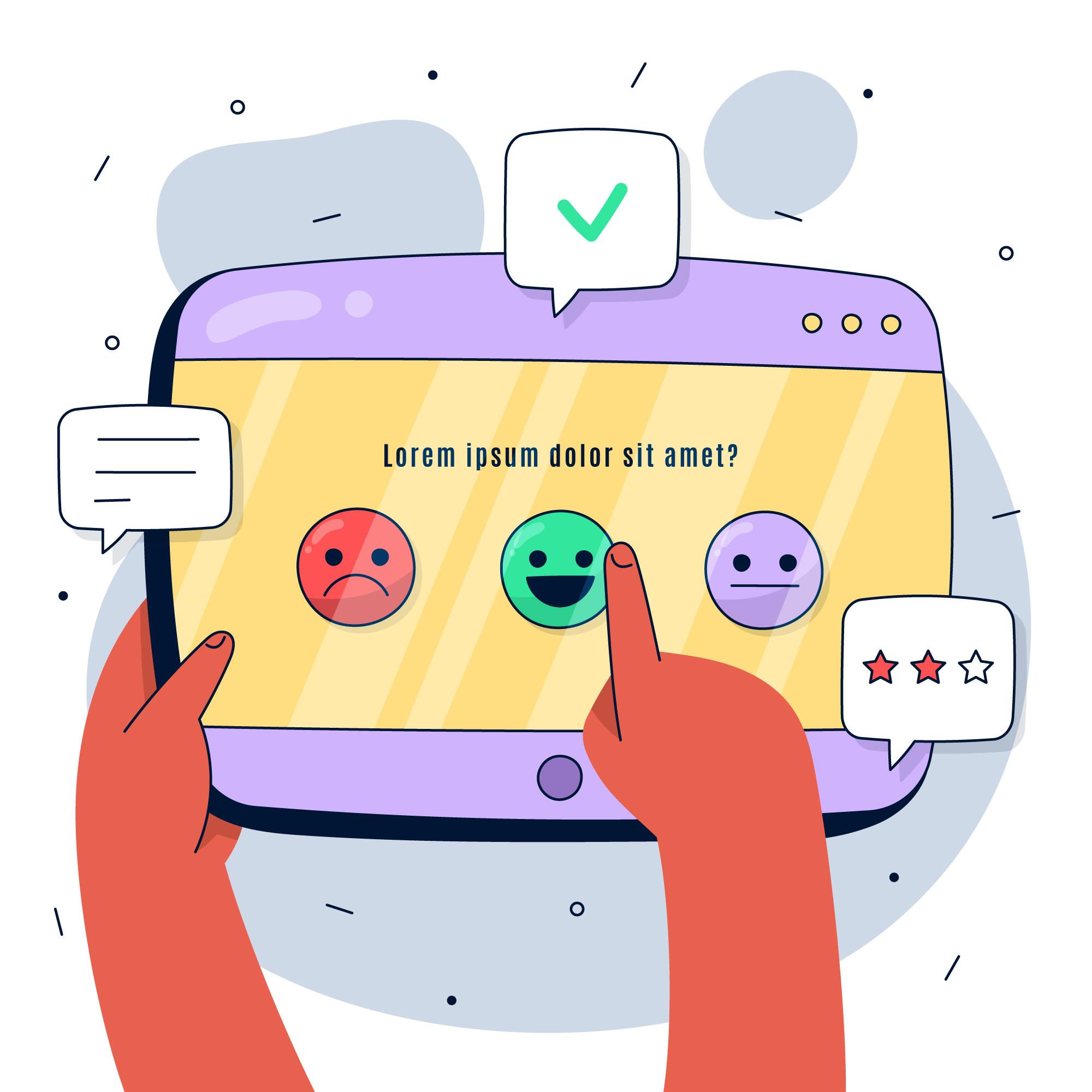Mobile app surveys offer a plethora of advantages that can significantly enhance your business by gathering crucial user feedback in real-time
Gathering feedback through mobile app surveys has become a staple for businesses aiming to enhance user experience and meet its customers' needs more effectively. The significance of leveraging mobile surveys for gaining valuable insights cannot be overstated, as they offer a direct line of communication to your users' thoughts and preferences. Implementing in-app surveys can lead to informed decision-making, facilitating improvements that can significantly impact your app’s success. As mobile devices continue to dominate our daily lives, understanding the nuances of mobile app survey design and execution becomes crucial for any business wishing to stay ahead in the competitive digital landscape.
This article will guide you through the process of recognizing the benefits of conducting mobile app surveys, designing effective in-app surveys, and the key questions to include for obtaining actionable feedback. Additionally, we will delve into analyzing and acting on mobile app survey results to improve the user experience, increase engagement through targeted surveys, and leverage these insights for continuous improvement. With a focus on practical tips and examples, you'll gain the knowledge needed to implement and benefit from mobile app surveys, ensuring that your strategies align closely with user expectations and preferences, all while fostering an environment of ongoing enhancement and user satisfaction.
Understanding Mobile App Surveys
Mobile app surveys are integral tools that allow you to capture valuable data from your app users in real-time. By turning user insights into actionable steps, you can significantly boost the product experience. These surveys enable you to measure customer sentiments across various aspects of your product, such as usability, aesthetics, functionality, value for money, performance, innovation, and emotional resonance.
To effectively utilize mobile app surveys, it's crucial to ask the right questions at the right time. Whether you're gathering feedback on feature requests, bug reports, product iterations, or the overall app experience, the timing and nature of the questions can greatly reduce churn or abandonment and improve overall app success.
Key Components of Mobile App Surveys
- Integration and Timing: Mobile surveys are seamlessly integrated into mobile applications and web platforms, popping up at designated times during user interaction. This method ensures that feedback is gathered without disrupting the user experience. For example, after completing a specific task or booking a service, a quick rating feedback might appear, asking for the user’s overall satisfaction.
- Engagement and Response Rates: By triggering surveys based on specific user actions or criteria, you can collect more targeted and valuable feedback, thereby increasing response rates. Mobile surveys are not only a method to collect feedback but also an engaging way to involve users in the development and improvement of your product.
- Data Collection and Structure: Surveys can collect a wide range of data, depending on their content and structure. If your application is in the development phase, targeted surveys can provide contextual insights that are crucial for refining features and overall functionality.
- User Experience and Loyalty: Understanding user preferences through surveys allows you to tailor your product more precisely to meet their needs, which is essential for improving mobile app conversion rates and enhancing customer satisfaction. Satisfied customers are more likely to return, contributing to higher customer retention and loyalty.
Effective Survey Practices
- Question Design: Ensure your surveys include a mix of closed and open-ended questions. This approach allows you to gather quantitative data while also capturing richer, qualitative insights that open-ended questions offer.
- Survey Length: Keeping surveys concise is crucial to maintaining user engagement. Long surveys may lead to higher dropout rates.
- Real-Time Insights: Leveraging in-app surveys for real-time insights can help you quickly identify and address issues, enhancing the overall user experience.
- Survey Tools: Utilize reliable mobile survey tools like surveyOcean, which offers a variety of widgets for in-app surveys. These tools help in collecting in-moment feedback efficiently.
By understanding these elements and integrating them into your mobile app surveys, you can effectively enhance user interaction and satisfaction, leading to a more successful mobile application.
Benefits of Conducting Mobile App Surveys
Mobile app surveys offer a plethora of advantages that can significantly enhance your business by gathering crucial user feedback in real-time. Here's how conducting these surveys can benefit you:
- Immediate Insight into User Experience: Mobile app surveys allow you to capture feedback instantly as users interact with your app. This immediate data collection helps you understand user behaviors, preferences, and the overall app experience, enabling you to make swift adjustments that enhance user satisfaction and app performance.
- Enhanced Decision-Making: With the ability to measure various aspects of your product such as usability, functionality, and aesthetics through targeted survey questions, you gain valuable insights that inform your decision-making process. This can lead to improvements that resonate well with your users, thereby boosting the overall success of your app.
- Increased User Engagement: By integrating surveys at strategic points within your app, such as after completing a task or during a significant interaction, you engage users effectively. This not only improves response rates but also makes users feel valued, as their opinions directly contribute to the app’s development.
- Reduction in User Churn: Understanding the reasons behind user actions like abandonment through surveys helps you address these issues proactively. Collecting feedback on bugs or other problems and resolving them quickly can reduce churn and improve user retention.
- Real-Time Problem Solving: Mobile app surveys facilitate the collection of real-time feedback, which is crucial for timely problem-solving. Addressing issues as they arise enhances the user experience and prevents minor inconveniences from escalating into major setbacks.
- Cost-Effective Market Research: Conducting mobile app surveys is a cost-effective way to perform market research. It eliminates the need for expensive, time-consuming methods like manual data collection or external market research agencies.
- Improved Product Development: Feedback collected through mobile app surveys can be pivotal in the product development process. Understanding what features users like or dislike, and what additional functionalities they expect, can guide your development team in prioritizing the product roadmap effectively.
- Better Customer Satisfaction Metrics: Mobile app surveys are excellent tools for measuring key customer satisfaction metrics such as CSAT (Customer Satisfaction Score) and NPS (Net Promoter Score). These metrics provide clear indicators of customer satisfaction and loyalty, which are essential for long-term success.
- Seamless User Experience: Surveys can be designed as non-intrusive pop-ups or slide-ins that do not disrupt the user experience. This seamless integration ensures that users are more likely to participate without feeling interrupted or annoyed.
By leveraging the power of mobile app surveys, you not only enhance user engagement and satisfaction but also gain valuable insights that drive your app towards success. These benefits underscore the importance of incorporating effective survey strategies into your mobile application.
Designing Effective Mobile App Surveys
To design effective mobile app surveys that capture valuable data and enhance user experience, you need to focus on several key elements. Here’s how you can create surveys that not only gather insightful data but also respect and enhance the user experience.
Key Components of Effective Mobile App Surveys
- Ask the Right Questions: The core of any effective survey is its questions. Focus on crafting questions that are relevant to the aspects of your product you most want feedback on, such as usability, functionality, aesthetics, and performance. Include a mix of closed and open-ended questions to gather quantitative data and richer, qualitative insights.
- Timing is Crucial: The timing of your survey can significantly influence the quality of feedback you receive. Avoid interrupting user interactions and instead, choose moments when users are likely to be most receptive, such as after completing a task or achieving a milestone within the app.
- Keep It Concise: To maintain high engagement levels, keep your surveys short. A concise survey respects the user's time and increases completion rates. Aim for microsurveys that include no more than two to three questions whenever possible.
- Segment Your Audience: Tailor your surveys to specific user segments to ensure the questions are relevant. This can be based on user behavior, purchase history, or engagement level. Effective segmentation leads to more relevant data and can help reduce survey fatigue.
- Leverage the Right Tools: Utilize robust mobile survey tools like SurveyOcean that offer a variety of in-app survey widgets. These tools help you collect real-time, in-moment feedback efficiently, enhancing the overall quality of the data collected.
Best Practices for Survey Design and Execution
- Visual Design and User Experience: Ensure your survey is visually appealing and consistent with your app’s design. This can boost participation rates and enhance the overall user experience.
- Real-Time Feedback: Implement surveys that can provide real-time insights. This allows for quick action on feedback, which can significantly improve the user experience and your app’s functionality.
- Testing and Iteration: Continuously test and iterate your surveys based on the feedback and data collected. This helps in refining the surveys to better meet your goals and the users' expectations.
- Non-Intrusive Delivery: Make sure the surveys are delivered in a way that does not disrupt the user experience. Consider user feedback on the survey’s timing and frequency to adjust how and when the survey is presented.
By focusing on these elements, you can design mobile app surveys that are not only effective in gathering feedback but also enhance user engagement and satisfaction. Remember, the goal is to gather valuable insights while maintaining a seamless and enjoyable user experience.
Key Mobile App Survey Questions to Include
When designing mobile app surveys, your primary aim should be to gather actionable insights that can help enhance the user experience and guide your product development. Here are some essential questions you should consider including in your mobile app surveys:
User Experience and Satisfaction
- Overall Experience: "How would you rate your overall experience of using this app?" This question helps you gauge the general satisfaction level and identify areas needing improvement.
- Specific Likes and Dislikes: Ask, "What do you like the most about this app?" and "Is there anything that you don't like at all about this app?" These questions allow you to understand the features that are working well and those that are not.
- Achievement of Objectives: "Were you able to achieve your objectives of using the app?" Understanding if users are meeting their goals through your app is crucial for assessing its effectiveness.
Design and Usability
- Design Feedback: "How would you rate the app’s overall design in terms of visual appeal?" and "Do you agree that the colors and visual elements used in the app are consistent with the brand's identity?" These questions help evaluate the aesthetic aspects of your app.
- Usability: Inquire if users were able to locate important features and information easily within the app and whether the app's font size and style are comfortable for reading and interacting with the content.
- Navigation and Layout: "Were the menu options clear and logically organized?" This question can reveal a lot about the navigational structure of your app.
Functionality and Features
- Feature Effectiveness: "Are you able to use all the features of the app easily and conveniently?" and "Which feature do you like the most?" These questions help identify the most valued features and any potential issues with functionality.
- Feature Improvement: "Do you think there is any feature in the app that is not very useful?" or "Do you have any issues with any feature and do you feel it should be improved?" These insights direct focus on what could be enhanced or removed.
Technical Aspects
- Performance Issues: "Did you encounter any technical issues or bugs while using the app?" followed by "Do you want to share any experience of facing any technical issues or bugs?" These questions help in identifying and fixing technical glitches that could degrade user experience.
- Customer Support: "How was your experience with our customer support team?" and "Do you agree that our support staff made it easy to resolve your issues and concerns?" Feedback on customer support can highlight the effectiveness of your support team and areas for improvement.
Feedback and Future Suggestions
- Open-Ended Feedback: "Do you want to share anything else about your experience with this app?" This open-ended question allows users to provide additional feedback that might not be covered by other questions.
- Feature Requests: "Is there any feature that you would like to see in the app in the near future?" Understanding user demand for new features can guide your future development roadmap.
Incorporating these questions into your mobile app surveys will not only enhance the quality of feedback received but also ensure that you are continually aligning your app’s development with user expectations and needs.
Analyzing and Acting on Mobile App Survey Results
Once you have gathered mobile app survey results, the next essential step is to analyze this data effectively and act on the insights to enhance your app’s performance and user experience. Here’s a structured approach to help you navigate through this process:
Step 1: Segregate the Data
Start by categorizing the feedback into different segments such as usability issues, feature requests, bugs, and general comments. This organization allows you to address specific areas more efficiently and prioritize actions based on the nature of the feedback.
Step 2: Analyze Quantitative and Qualitative Data
For quantitative feedback like ratings or multiple-choice responses, use visual tools such as charts and graphs for a clear overview. Tools like SurveyOcean provide advanced reporting features that help in visualizing this data effectively. On the other hand, qualitative feedback, such as open-ended responses, requires deeper analysis. Sentiment analysis tools can be utilized here to gauge user emotions and highlight prevalent themes in their feedback.
Step 3: Prioritize Actions
Not all feedback will carry the same weight. Prioritize issues based on factors like their impact on user experience, the number of users affected, and the severity of the issue. For instance, a bug affecting many users should be addressed before making minor aesthetic changes.
Step 4: Act on the Insights
Once the analysis is complete and priorities are set, start acting on the insights. This could involve fixing bugs, making UI/UX improvements, or introducing new features as requested by users. Ensure that your development team is aligned and has a clear understanding of the tasks at hand.
Step 5: Communicate Changes to Users
After implementing changes, it’s crucial to inform your users about the updates. This communication can be achieved through app updates, newsletters, or in-app notifications. Letting users know that their feedback has been heard and acted upon not only builds trust but also encourages them to participate in future surveys.
Step 6: Continuous Improvement
Feedback collection and analysis should be an ongoing process. Regularly revisit the feedback, reanalyze the data, and continue to make improvements. This iterative process ensures that your app evolves in alignment with user needs and preferences.
By following these steps, you can ensure that the feedback collected through mobile app surveys is translated into meaningful improvements, ultimately enhancing the overall user experience and satisfaction.
Improving User Experience with Survey Insights
Mobile app surveys are a critical tool for enhancing user experience by providing real-time feedback that can be turned into actionable insights. By capturing data across various aspects of your product, such as usability, aesthetics, functionality, and performance, you can make informed decisions that boost overall app success and reduce user churn.
Key Strategies for Utilizing Mobile App Survey Insights
1. Ask the Right Questions
To extract the most valuable insights, it is essential that you ask the right questions at the right time. This could range from feature requests and bug reports to overall app experience. Each question should be designed to elicit responses that provide a clear understanding of the user's experience and expectations.
2. Timing and Context
The effectiveness of a survey significantly depends on its timing. Surveys should be strategically presented at moments when users are most engaged, such as after completing a task or experiencing a new feature. This not only improves the likelihood of participation but ensures that the feedback is relevant and timely.
3. Analyze Feedback for Actionable Insights
Once collected, it's crucial to analyze the feedback to identify common themes or issues. Tools like SurveyOcean can offer granular insights into user behavior, helping you to understand how users interact with your app and where they encounter problems.
4. Enhance User Experience Based on Feedback
Use the insights gathered to make necessary adjustments to your app. This could involve addressing bugs, improving functionality, or adding new features as suggested by users. Ensuring that these changes are based on user feedback helps in aligning the app more closely with user expectations.
5. Continuous Improvement
Improving user experience is an ongoing process. Regularly update your surveys, test new questions, and iterate based on the latest user feedback. This continuous cycle of feedback and improvement will help maintain a high level of user satisfaction and loyalty.
By integrating these strategies, you can leverage mobile app surveys to not only understand but significantly enhance user experience. This leads to higher satisfaction rates, better retention, and ultimately, a more successful mobile application.
Increasing Engagement Through Targeted Surveys
Increasing engagement in your mobile app can significantly boost user retention and satisfaction. One effective strategy is to implement targeted surveys that ask users about their likes, dislikes, and desired improvements within your app. This not only provides you with valuable insights but also makes users feel valued and heard, enhancing their overall engagement with your app.
Building a Socially Engaged Community
Creating a socially engaged community where users can interact with you and each other is a powerful way to gather feedback. This interaction fosters a sense of community and belonging, encouraging users to share their experiences and suggestions more openly. Regularly engaging with this community and acting on the feedback received can lead to significant improvements in your app, making users more likely to stay engaged and less likely to churn.
Integrating Surveys into Customer Support
Incorporating surveys into your customer support process is another effective method to measure customer satisfaction and gather feedback. Utilizing in-app messaging and chat functions allows users to easily raise concerns and ask questions. This direct line of communication not only helps in resolving issues efficiently but also provides a platform for users to express their thoughts, which can be crucial for continuous app improvement.
Feedback Mechanisms and Best Practices
Utilizing in-app feedback mechanisms such as surveys, feedback forms, or rating prompts can greatly enhance user engagement. These tools should be integrated seamlessly into your app’s interface, allowing users to provide feedback without feeling intruded upon. To ensure effectiveness, these surveys should be designed to be user-friendly and straightforward, requiring minimal effort from users. Simple one-click ratings or quick surveys are often more effective than lengthy questionnaires.
Analyzing Feedback for Continuous Improvement
The process does not end with collecting feedback. It’s crucial to analyze this feedback to identify common themes and areas for improvement. Setting up a systematic process for reviewing and categorizing feedback helps in prioritizing modifications based on user input. Regular updates based on this feedback not only improve the app’s functionality but also demonstrate to users that their opinions are valued and taken seriously.
By focusing on these targeted strategies, you can significantly increase user engagement through surveys. This not only improves the user experience but also contributes to a higher retention rate and overall success of your app.
Leveraging Mobile App Surveys for Continuous Improvement
Mobile app surveys serve as a crucial mechanism for continuous improvement in your app's development and user experience strategy. By leveraging real-time data collected from surveys, you can make informed decisions that progressively refine and enhance your mobile app. Here’s how you can effectively use mobile app surveys for continuous improvement:
Key Strategies for Continuous Improvement through Mobile App Surveys
- Real-Time Feedback Implementation: Mobile app surveys enable the capture of real-time feedback, allowing you to address issues promptly and make adjustments that enhance the overall app success. This immediate responsiveness not only improves user satisfaction but also helps in fine-tuning your app on the go.
- Effective Question Design: To ensure that the feedback you receive is actionable, it’s essential to ask the right questions at the right time. This involves a mix of closed and open-ended questions that cover various aspects of your product such as usability, aesthetics, functionality, and more. Each question should be crafted to elicit responses that directly inform potential improvements.
- Segmented Surveys for Targeted Insights: Utilizing in-app survey segmentation allows you to tailor questions to specific user groups based on their behavior or usage patterns. This targeted approach not only increases the relevance of the questions for users but also enhances the quality of the feedback you receive, making it easier to identify areas for improvement.
- Utilizing Advanced Survey Tools: Employing robust tools like SurveyOcean or Refiner enhances the effectiveness of your surveys. These tools offer various widgets and functionalities that integrate seamlessly into your app, facilitating the collection of in-the-moment feedback without disrupting the user experience.
- Analyzing Feedback for Actionable Insights: Systematically analyze the feedback to identify common themes or recurring issues. Tools that support advanced analytics can help segment the feedback and prioritize areas that require immediate attention, thereby streamlining the process of implementing changes.
- Iterative Development Based on User Input: Continuous improvement is about iterative development. Use the insights gathered from mobile app surveys to make incremental changes to your app. This not only helps in refining the app but also aligns its development with user expectations and needs.
- Engaging Users in the Development Process:Make your users feel like a part of the development process by actively involving them through surveys. When users see that their feedback is being used to make tangible improvements, it increases their engagement and loyalty to the app.
By integrating these strategies, you can leverage mobile app surveys not just as a tool for collecting feedback, but as a fundamental part of your app’s continuous improvement process. This approach ensures that your app remains adaptive to user needs and stays competitive in the dynamic mobile app market.
Conclusion
Through exploring the various facets of mobile app surveys, it's clear that their integration and strategic execution can significantly enhance user experience and drive app success. Key takeaways include understanding the value of asking the right questions, capturing real-time feedback, and leveraging this insight for continuous improvement. The insights derived from targeted surveys are instrumental in refining app functionality, improving user satisfaction, and ultimately fostering a loyal user base. By focusing on these elements, businesses can ensure their app not only meets but exceeds user expectations, paving the way for increased engagement and retention.
As we look toward the future of mobile app development and user interaction, the role of surveys remains undeniably pivotal. The process of gathering, analyzing, and acting on user feedback must be an ongoing endeavor, a continuous loop that fuels app innovation and growth. By embedding these practices into your app development strategy, you're not just creating a product but cultivating an experience that resonates deeply with users. This commitment to improvement and adaptation is what will differentiate successful apps in the competitive digital marketplace, ensuring they remain relevant and highly valued by their users.
FAQs
1. What are some effective questions to include in an app survey?
When crafting an app survey, consider including questions that help you understand the user's role and their main objectives with your app. Examples of such questions are:
- What is your role in your company?
- What will you primarily use our product for?
- What task do you need our product to accomplish for you?
- What are your goals with our app?
- Will you be using this product individually or with a team?
2. How should I design an in-app survey?
To design an effective in-app survey, keep it brief and straightforward. Avoid using complicated jargon that might confuse the respondents. Focus your questions on specific topics, products, or experiences and provide simple response options like rating scales or multiple-choice questions. Regularly test and refine your survey questions to improve their effectiveness.
3. What methods are used to assess the success of a mobile app?
The effectiveness of a mobile app can be measured by tracking various key performance indicators. Important metrics to monitor include user acquisition, user engagement (daily and monthly active users), retention rates, session length, and specific in-app behaviors. Additionally, keep an eye on revenue metrics such as lifetime value, conversion rates, and churn rate to gauge financial success.
4. How can users provide feedback on a mobile app?
Users can offer feedback on a mobile app through several methods such as writing reviews, rating the app, suggesting new features, or simply giving a thumbs up or down. This feedback is crucial as it helps app developers and product managers understand the app’s strengths, popular features, and areas that may need enhancement.
Create Survey Now













